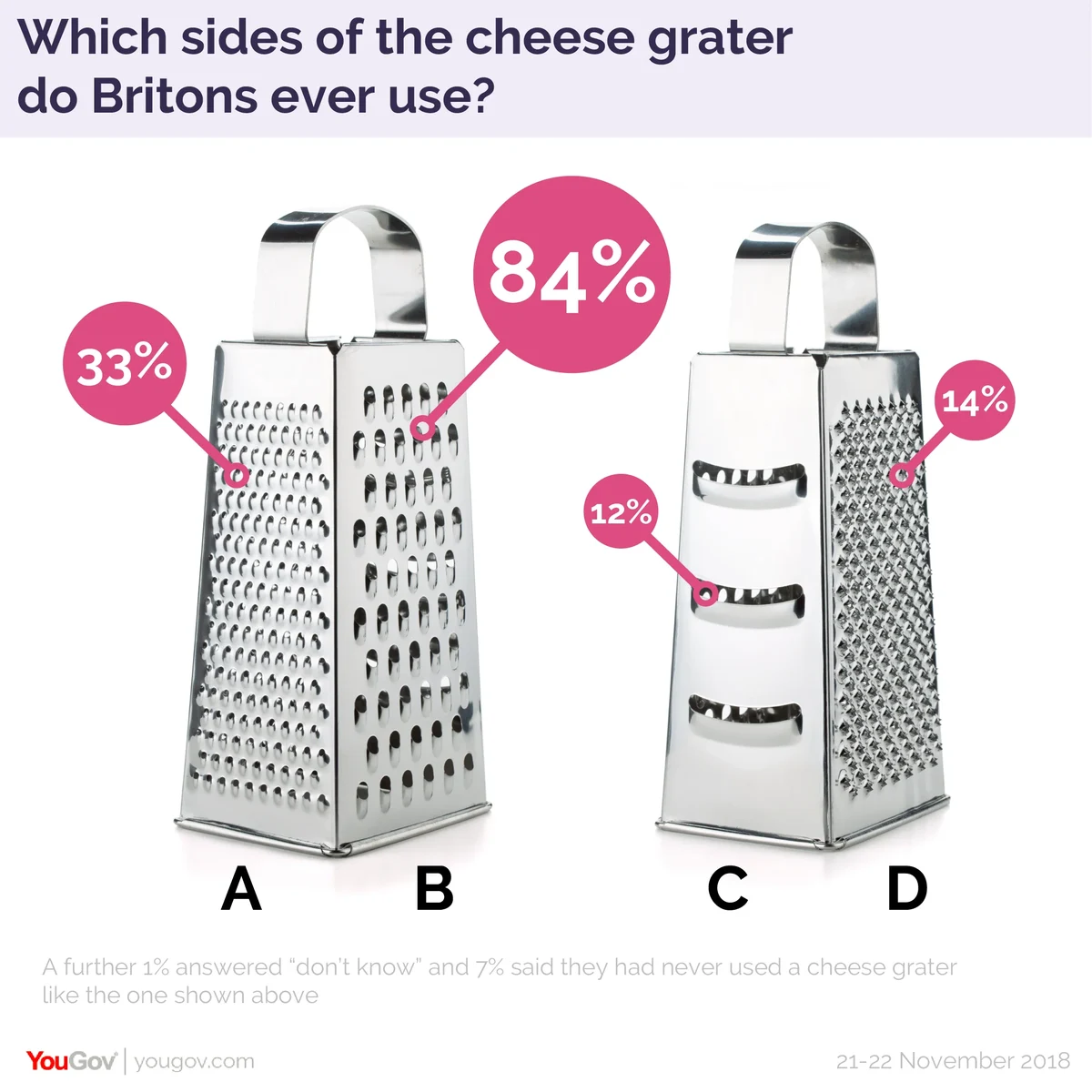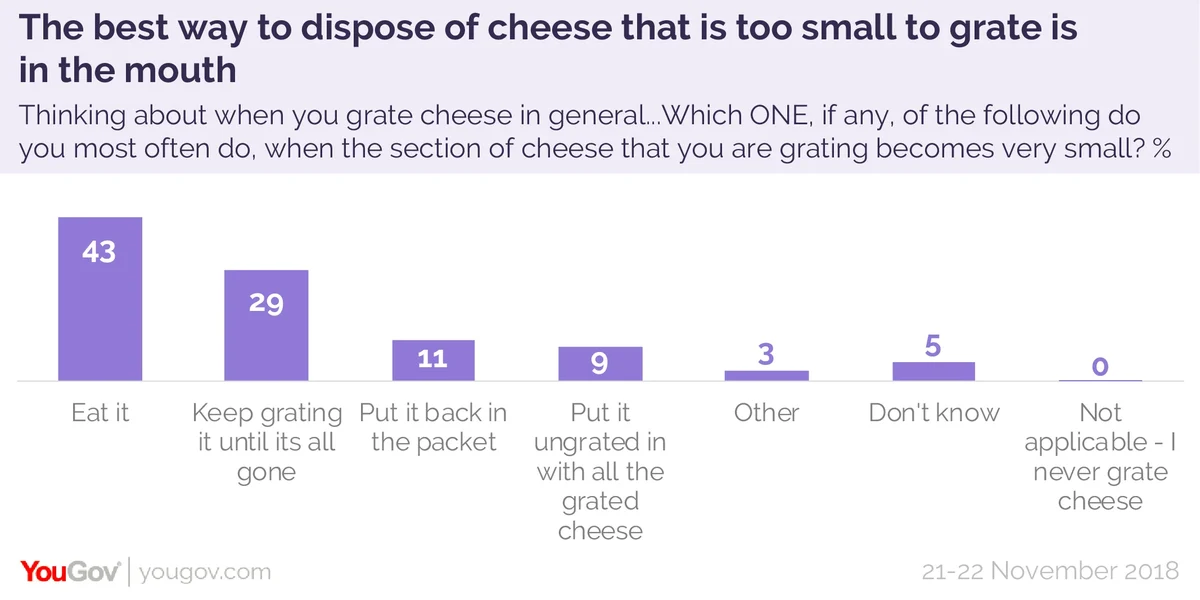Only one edge on the standard four sided box grater is getting much love
As Britons stand in the kitchen, grating away at a block of cheddar, many will have asked themselves “what are the other holes on this thing even for?”
On a classic four-sided box grater like that depicted below, the vast majority of people (84%) opt for the grating side with the medium raindrop-shaped holes (side B in the image). In strict culinary terms, people rubbing their cheese against this side aren’t actually grating – they’re shredding.
However, few Brits ever use any of the other sides. One in three (33%) use the side with the smaller raindrop-shaped holes (A in the image). This side is also technically for shredding.

Even fewer (14%) use the side with the small prickly holes (D in the image). This side is in fact the only one specifically for “grating” (as opposed to shredding or shaving). In cheese terms this side is good for harder varieties like parmesan. Despite popular perception, it’s not designed to zest citrus fruits.
Finally, a mere 12% use the side with the very wide holes (C in the image) that are used for shaving cheese.
What of cheese lumps that are too small to grate?
The classic cheese-grating conundrum is what to do with lumps that have become too small to grate. Britain’s most common response, given by 43% of people, is that they just eat it.
A further one in nine (11%) say they pop the too-small-to-grate chunk back into the packet, while 9% bung it in with the grated cheese.
However, for three in ten Brits (29%), no amount of cheese is too small not to grate - they bravely risk their fingertips by grating until all the cheese is gone.

Finally, last month the BBC released a “life hack” proclaiming that we’ve all been grating cheese wrong. Rather than standing the grater up, it should be lain on its side, allowing for the cheese to simply be tipped into a bowl once grated. At no point is it explained how this manoeuvre is to be pulled off without also grating one’s kitchen worktop.
Only 5% of Britons are grating their cheese in the manner the BBC outlines. Three quarters (73%) take the more traditional approach of standing the grater up, while 29% prefer to tilt it at an angle.
Photo: Getty










